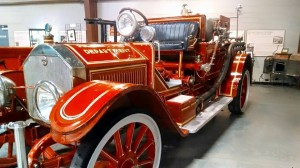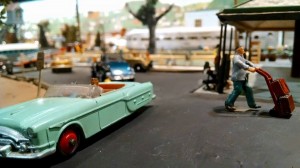
Order a Commemorative Brick to Place in Our Community Garden, Today!
“The Ratcliffe” as it is affectionately called, offers a unique blend of local and national exhibits, highlighting the cultural significance that the railroad and early transportation play in small town living. The museum allows community members and tourists alike, the opportunity to experience the draw of yesteryear with hands on displays, guided tours, and a glimpse into our beautiful and rich culture.

Located in the Town of Pulaski, the Raymond F. Ratcliffe Memorial Transportation Museum offers a display of the history and culture of the Pulaski area. The Town, which according to its historical marker, “was founded at the coming of the railroad,” was a booming industrial center by the late 1880’s. The proximity of coal led to the development of foundries and the smelting of minerals.
Later, economic cycles saw the emergence of consumer industries such as textiles and furniture making. The Town of Pulaski also played an important role as a retail and entertainment center for Southwest Virginia.
The Museum’s artifacts include historic photographs, items from the founding industries and the Town’s railroad past, newspapers chronicling important events locally and nationally, and a model railroad display.
Although there is an important pre-history to the town that was to become “Pulaski,” the “big boom” that brought the town into being was transportation (the railroad), the discovery of coal nearby at the Altoona (and later Empire) Mines and investment from northern commercial interests in mineral extraction. The Bertha Iron and Zinc Company went into blast at Martin’s Station in 1879. Soon it and other foundries created a climate for hotels, mercantile stores, saloons, and other businesses of a broad-shouldered, arrogant start up incorporated in 1886 as “Pulaski City.”

The Ratcliffe Memorial Transportation Museum featuring the Milton Brockmeyer Train Diorama is pleased to tell the story of that boom town and its maturity as a civic force in the New River Valley and in Southwest Virginia. From wooden sidewalks and buildings lining Railroad Street (now Valley and Randolph), to modern structures that lined Commerce and Valley Streets and the lovely residential districts on the southwest, to the well-planned, and carefully executed re-channeling of Peak Creek and the grid system for the commercial and residential districts to come, the land companies envisioned a modern city. By the early 1920’s, although not realizing the dream to be “the Pittsburgh of the South” (only Birmingham could claim that title), Pulaski was a thriving place facing its first economic transition from heavy to consumer industry. Weathering that transition well, the resilient residents endured the Depression and arguably achieved a post-War Zenith between 1965-1975. The railroad, highways, and even flight created our town.